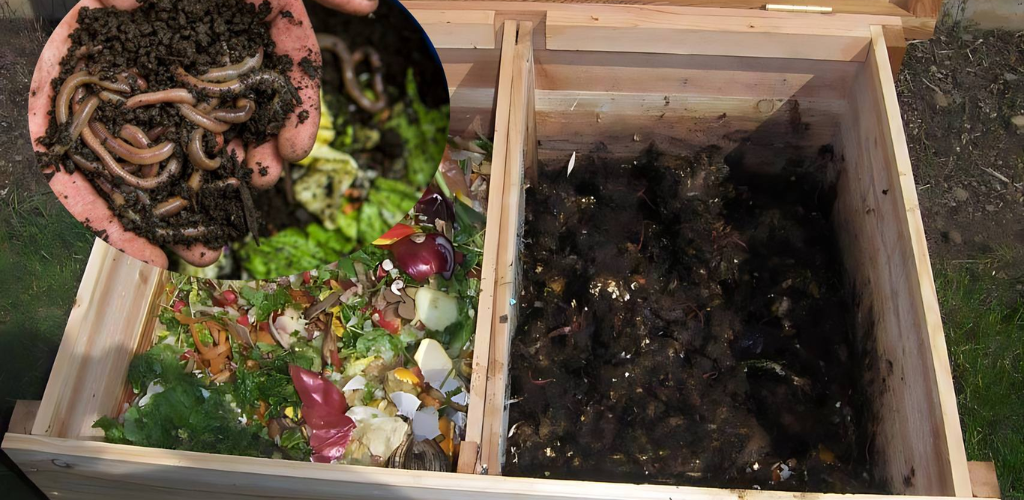How to make a homemade vermicomposter
In today’s world, vermicomposting has become a popular and effective way to recycle kitchen waste while producing high-quality organic compost for our gardens. Would you like to embark on this eco-friendly journey? In this guide, we’ll show you how to create your own homemade vermicomposter using a three-bin system – an effective and economical option to contribute to a more sustainable environment.
Necessary materials:
- Three durable plastic containers (preferably Roughneck brand for strength)
- A lid for the containers
- A drain grate or similar item
- Drill with a quarter inch drill bit
- Bricks or blocks for elevation
Step by Step Guide:
- Preparing the Containers: Begin by drilling quarter-inch holes in the bottom of two of the containers. These holes are essential to allow the worms to move between layers and facilitate drainage. Also, drill holes around the top edges of the containers to ensure proper ventilation.
- Drainage System Installation: The bottom container will be used as a liquid collector. This is where you will place the drainage grate. Make sure to attach it to the inner side of the container for effective drainage. The drilled holes will allow for the drainage of excess liquid, known as “worm tea,” which can be used as a powerful liquid fertilizer.
- Vermicomposter Assembly: Stack the two perforated bins on top of the drainage bin. These will serve as housing for the worms and composting area. Initially, the worms and compostable material will go into the top bin.
- Transferring Worms: Carefully transfer the worms to the upper bin, along with their bedding and food scraps.
- Maintenance and Harvest: Continue adding kitchen scraps and compostable material to the top layer. The worms will migrate to the new food source, leaving rich compost in the bin below. Once a bin is full of compost and free of worms, you can empty it into your garden.
- Elevate the System: Elevate the entire setup on bricks or blocks. This elevation will facilitate drainage and accessibility of the system.
Conclusion: Creating a homemade vermicomposter is a rewarding and environmentally friendly activity. This three-bin system is efficient, cost-effective, and a great way to contribute to a sustainable organic waste recycling cycle. As you become more familiar with the process, feel free to adapt it to your specific needs and enjoy the benefits of rich, healthy organic compost for your garden! Ready to start your own vermicomposting project? Share this guide with friends and family and join the movement toward a more sustainable lifestyle!
